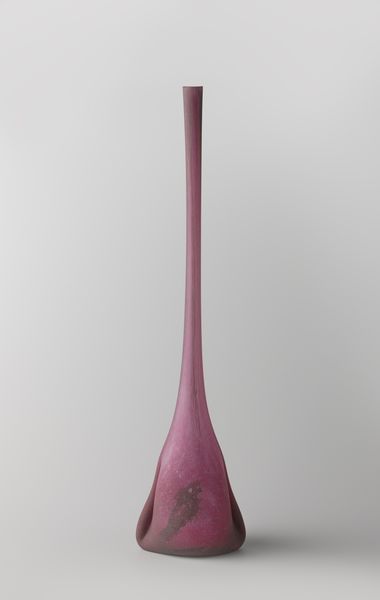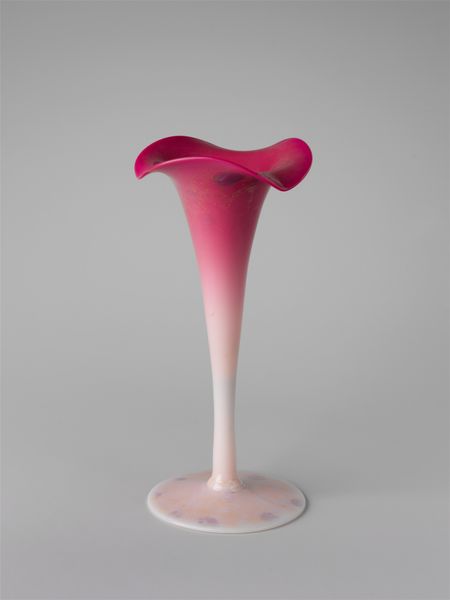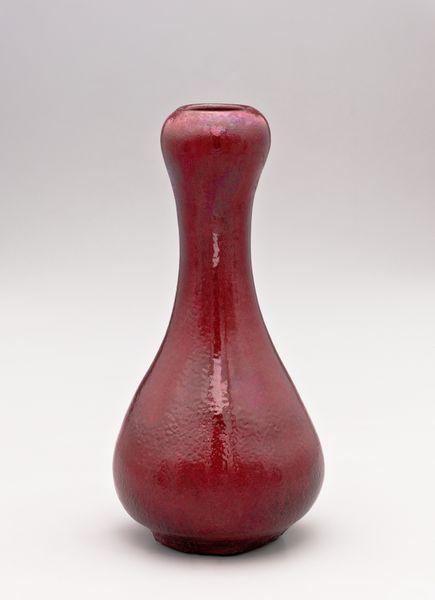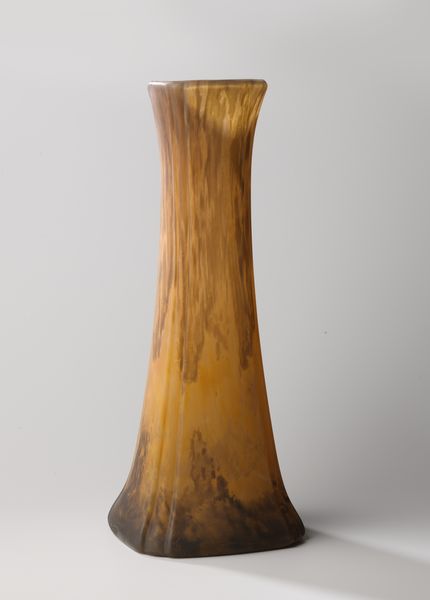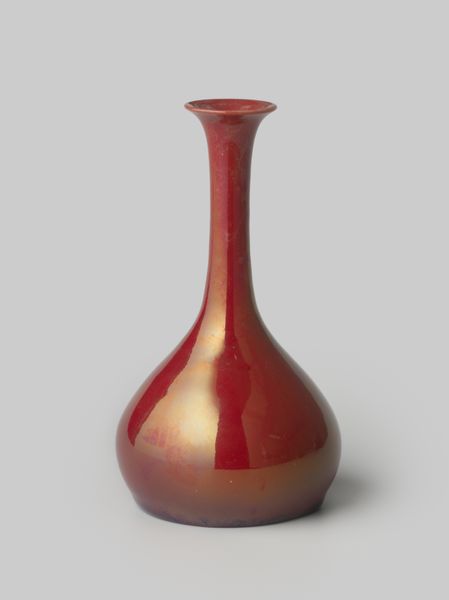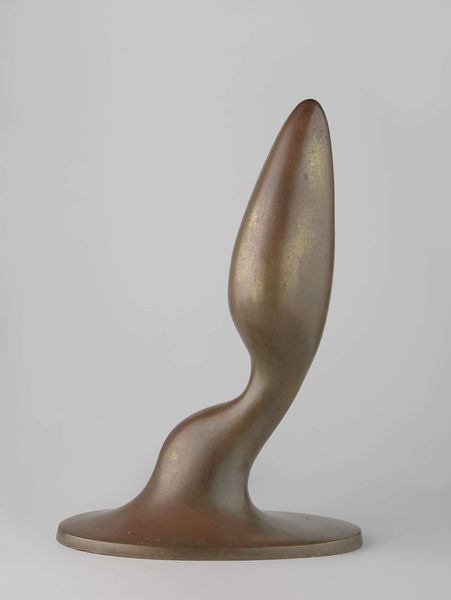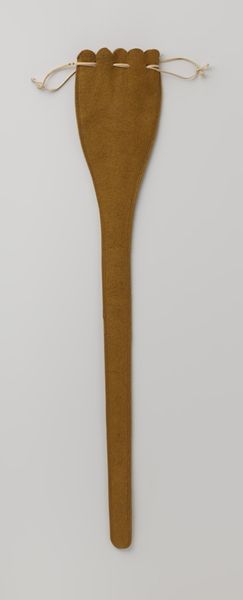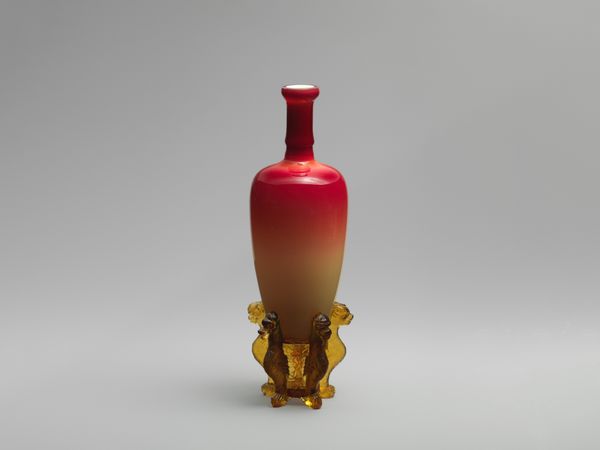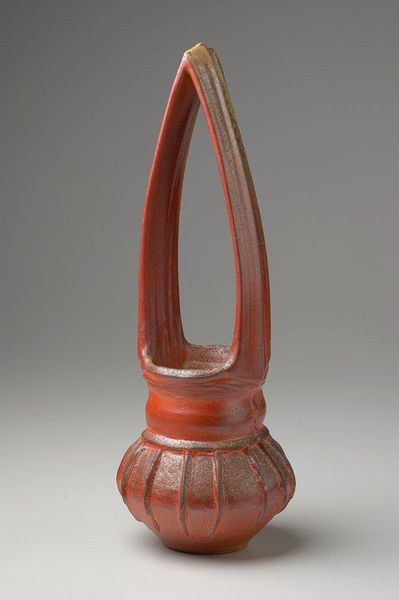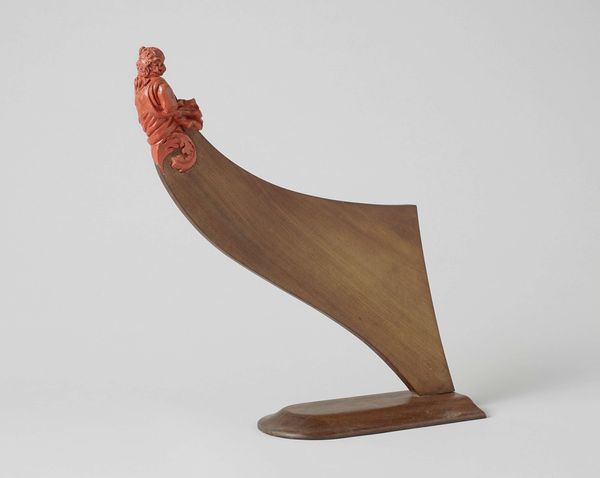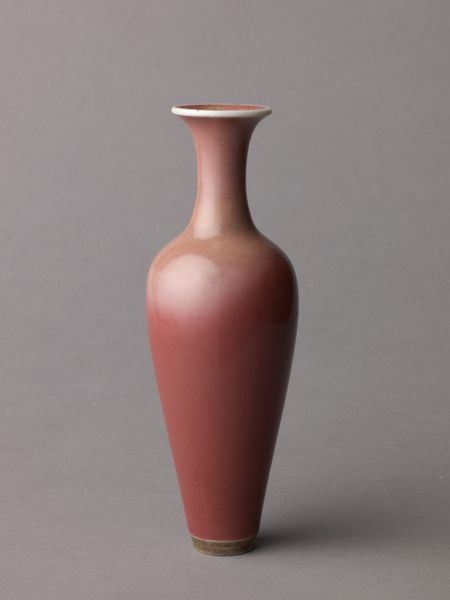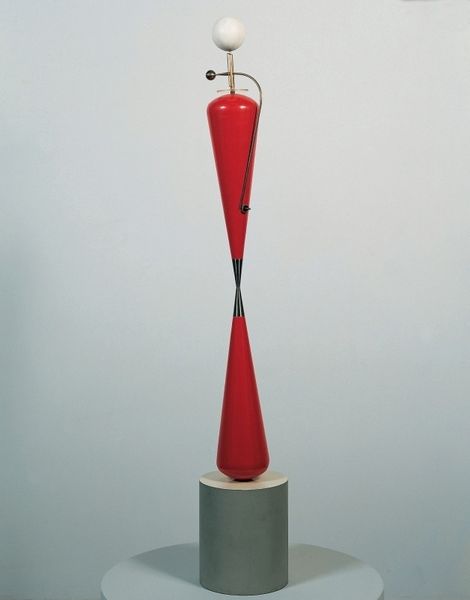
glass
#
art-nouveau
#
aestheticism
#
vase
#
glass
#
decorative-art
Dimensions: 42.8 × 11.1 cm (16 7/8 × 4 3/8 in.)
Copyright: Public Domain
Curator: What strikes me immediately is the audacity of this elongated form, the surprising lightness conveyed by the translucent glass. Editor: This is Christopher Dresser's "Clutha Vase," created around 1895. It is currently held here at the Art Institute of Chicago. Beyond its obvious aesthetic qualities, the "Clutha Vase" presents an intriguing case study in late 19th-century industrial production and design. Curator: Industrial production? I was captivated by the elegant, almost floral curve of its opening. There's such an arresting use of line and contour, the way the form tapers and flares… Editor: And the manufacturing of the "Clutha" range – which included this vase – involved complex social relationships of production, as this was made at a time of intense debate about the role of design in industry, about elevating craft. These pieces are about how aesthetic values were being negotiated within larger structures. Curator: While all that undoubtedly matters, let’s not neglect the pure visual impact. I love the way the light plays within the glass, creating depth. Note the mottled, organic quality and use of color! There is great intent here in producing a vessel that elevates the spirit through beauty and harmony. Editor: That mottled effect is deliberate and actually rather significant to consider, as Dresser employed industrial techniques of the period to emulate the texture of natural formations within mass-produced glasswork. The "imperfections" speak volumes about the late 19th-century tension between mass production and handmade art objects. Curator: Ah, but to suggest it is "imperfect" seems an odd interpretation! To my eyes it shows his embrace of nature and his deft control in guiding this flowing molten material! He wasn’t simply interested in functionality or just embracing industrialization. There’s an expressiveness here. Editor: Well, and of course, the factory workers at the Clutha Glassworks also had some expressive agency within those processes, which should be acknowledged as part of any analysis of these pieces. The "Clutha Vase" offers fertile ground to see the collision of Victorian values. Curator: I’ll admit, knowing some of this socio-economic context certainly casts new light on this visually striking vase. Editor: Indeed! The materiality and manufacture – it all informs our understanding of what may seem simply decorative.
Comments
No comments
Be the first to comment and join the conversation on the ultimate creative platform.
